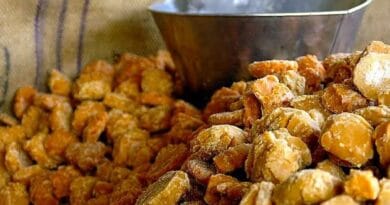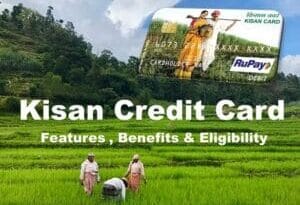Smart/Precision Farming is Swiftly Making the Farms More “Intelligent”
Precision agriculture using sensing technologies is swiftly gaining popularity
The world’s population is increasing by around three people every second, or 240,000 people every day. According to the UN Population Portal, approximately 8.2 billion people are going to exist on the globe. by the end of 2025 and 9.7 billion people by 2050.
This implies that for the next few years, there will be an additional billion mouths to feed. Additionally, the global population is expected to surpass that of the early 1900s in just one generation.
The challenges are enormous since many of the resources required for sustained food security are already overextended. Meanwhile, both locally and worldwide, agricultural production is already being adversely affected by factors like;
- Climate change
- Land degradation
- Soil erosion
- The rise in pests and diseases
- Non-climatic problems like urbanization
- Competition for natural resources
- Inadequate infrastructure is hurting agricultural production.
Farms need to produce more food while protecting the environment, but they can’t accomplish this with the conventional agricultural methods of today.
Precision / Smart Agriculture ;
- Using sensing technologies to make farms more “intelligent” and connected through so-called “precision agriculture,” often referred to as “smart farming,” is one strategy to address the problems and improve the quality and quantity of agricultural products.
- In traditional farming, entire fields are managed by making decisions about planting, harvesting, irrigation, and applying fertilizers and pesticides based on historical data and local conditions.
- Conversely, precision farming utilizes sensors, robots, GPS, mapping tools, and data analytics software to provide plants with individualized care, eliminating the need for additional workers.
- Drones equipped with cameras and sensors installed on stationary objects or robots wirelessly transmit data and photos of individual plants, including the size of the stem, the shape of the leaves, and the moisture content of the surrounding soil, to a computer that scans for indicators of stress and health.
- After receiving real-time feedback, farmers apply fertilizer, herbicide, or water in precisely measured amounts to the regions that require it.
- Additionally, farmers can use the technology to help them choose when to grow and harvest crops. Precision farming can thereby increase crop yields and health, decrease chemical and water consumption, and enhance time management—all of which boost farmers’ profits and save resources while lowering chemical runoff.
Technologies used for Precision Farming ;
The development and implementation of precision agriculture, also known as site-specific farming, has been made possible by combining these two systems.
a) Global Positioning System (GPS)
b) Geographic information systems (GIS).
a) Uses of Global Positioning System (GPS) in Agriculture ;
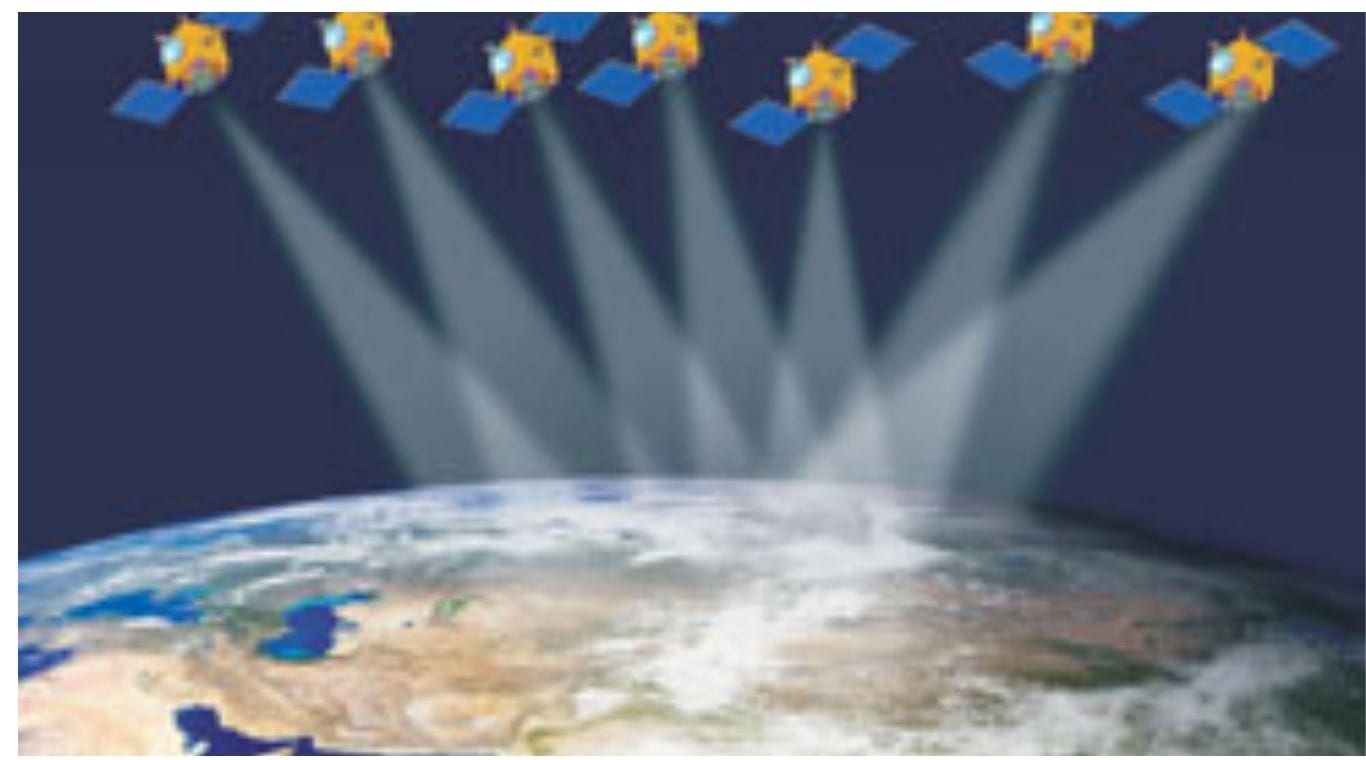
- Large amounts of geographic data can be processed and analyzed more efficiently thanks to these technologies, which enable the combination of real-time data collection and exact position data.
- Precision farming applications, including farm planning, field mapping, soil sampling, tractor navigation, crop scouting, variable rate applications, and yield mapping, all utilize GPS technology.
- Farmers are capable of working in low-visibility field conditions like rain, dust, fog, and darkness thanks to GPS.
- Satellites of the Global Positioning System transmit signals that enable GPS receivers to determine their location. Since this data is sent in real-time, the position is continuously updated while moving, and information is given.
- Mapping crop, soil, and water measurements is made possible by having accurate position data at all times.
- Users can return to particular spots to sample or treat those regions by using GPS receivers, which can be transported to the field or attached to tools.
b) Importance of Geographic Information System (GIS) in Agriculture;
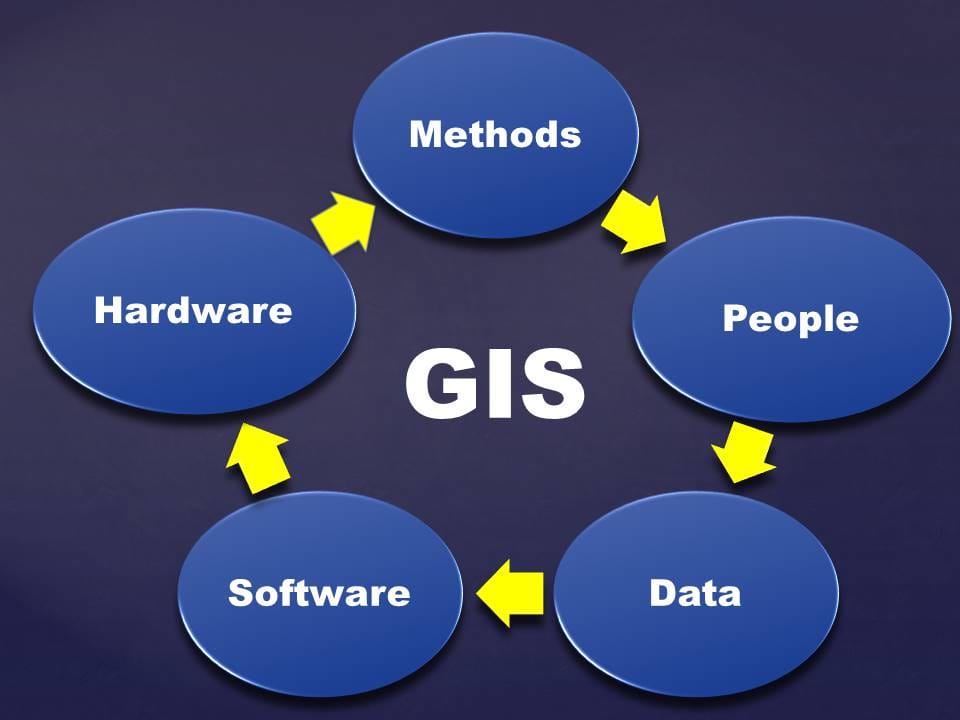
- GIS is a key element of precision agriculture, which uses spatial data to map fields, track crop health, and more effectively manage resources like fertilizer and water.
- Geographic Information Systems (GIS) are collections of data and software used for spatial analysis of GPS-referenced data.
- An agricultural GIS system may contain databases, such as information from soil surveys, soil tests, yield statistics, insect infestations, remote sensing imagery, and other kinds of records and observations that may be gathered and compared to their physical location (via GPS).
- In order to show their spatial diversity within the field, these datasets can be transformed into maps, which add layers to the field database.
- GIS is capable of more than just mapping.GIS software shows that the actual strength lies in calculations and analysis of georeferenced data sets, linking their influence on yields and interactions with other production parameters.
- It is possible to forecast input reactions or identify interactions that impact yield by employing models that integrate the many spatially variable data sets.
- As time goes on, the GIS databases become more and more valuable as instruments for recording and forecasting.
c) Uses of Remote Sensing technology in Precision Farming;
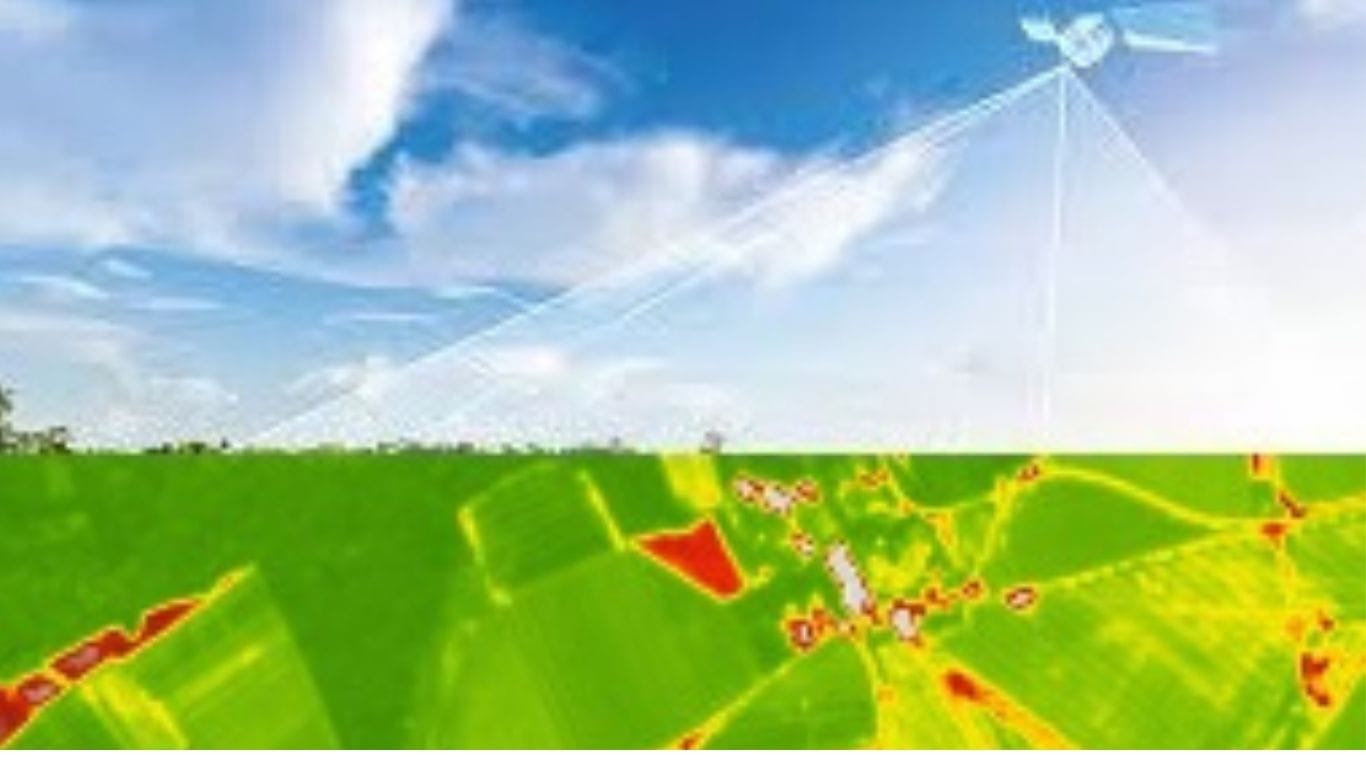
- Precision farming is increasingly utilizing remote sensing, which uses satellites or aircraft scanners to track variations in light wavelengths from fields and developing crops, when combined with field scouting (also known as “ground truth observations”),
- Satellite images can also be used to map field borders and tile drainage line locations more precisely. This helps pinpoint the causes of variability. With the aid of GIS tools, the gathered data may be mapped and examined to add more data layers for GIS analysis and management choices.
- By identifying comparable patterns, remote sensing aids in defining the scope of issues found during field scouting.
- It is used to record difficulties with pests, weather, nutrient management, and other things.
d) Smartphone-Based Sensors ;
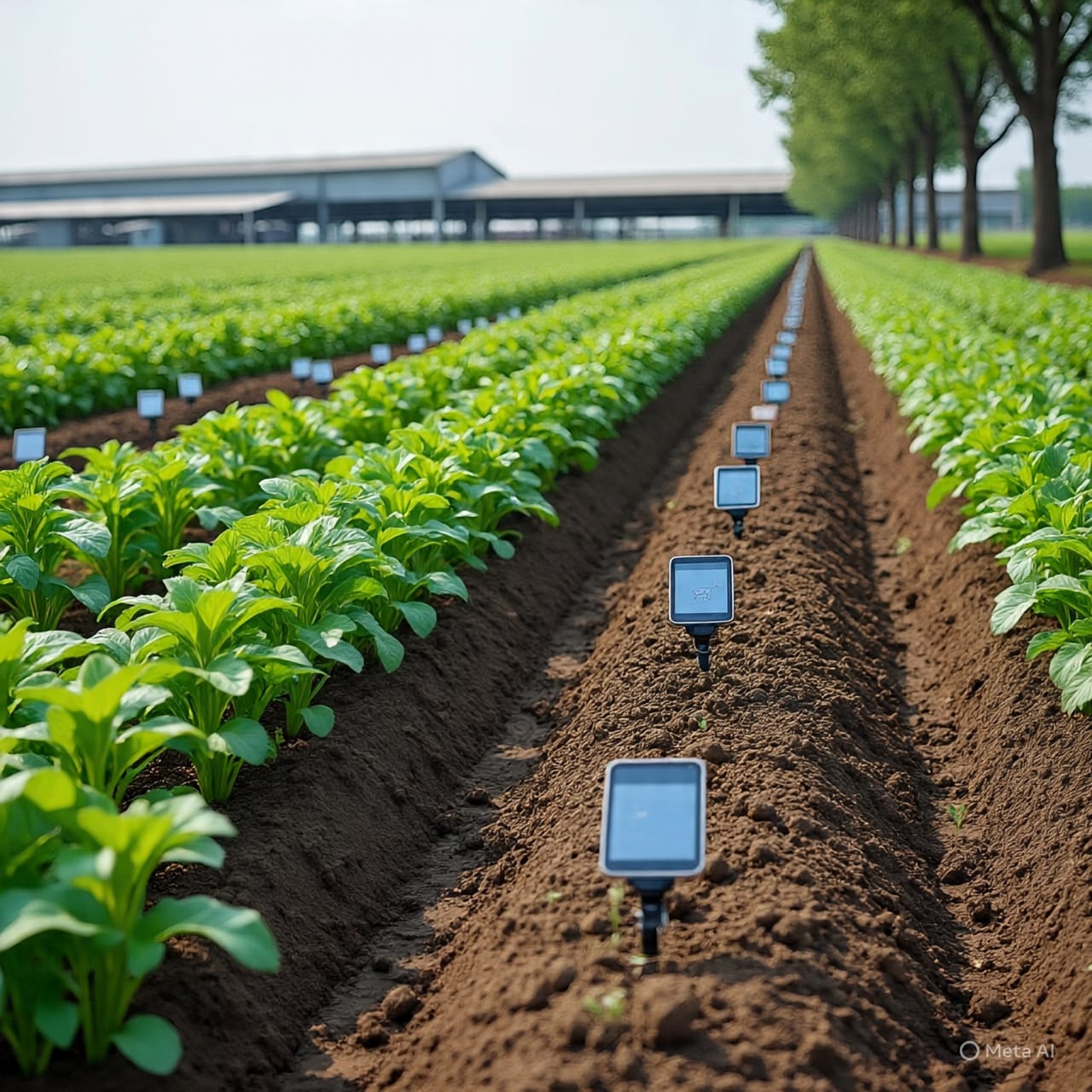
- Smartphone usage in third-world countries is playing a vital role in farmers’ businesses in agriculture.
- Recently, communication through smartphones has been considered important in enhancing farmers’ access to understanding the agricultural market situation.
- Farming communities appreciate smartphones as an easy, fast, and convenient way to communicate and get prompt answers to respective problems.
- Smartphones have become a useful tool in agriculture because their mobility matches the nature of farming, the cost of the device is highly accessible, and their computing power allows a variety of practical applications to be created.
- Moreover, smartphones are nowadays equipped with various types of physical sensors( e.g., positioning sensors, motion sensors, and cameras and microphones ), which make them a promising tool to assist diverse farming tasks.
e) Uses of Robotics / Drones in Agriculture ;

- Deploying robots on farms is an exciting time in general, and it is obviously necessary given the push for sustainability and increasing food production.
- Current efforts are focused on developing the technology that will allow specific chores to be automated before being integrated into a “digital farm,” which would enable farmers to manage their operations in a way that is both efficient and gratifying.
- These days, robots are performing a wide range of agricultural activities, such as pruning vineyards and growing greenhouse vegetables, with differing degrees of effectiveness. Additionally, agronomic activity has been abundant.
- The largest push has been for telematics-based remote control of autonomous equipment. Numerous agricultural tasks have already seen the use of autonomous robots. With the accuracy offered by the vehicle itself (now roughly ±2 cm when utilizing GNSS technology), autonomous robots may conduct conventional operations like tilling, planting, and harvesting grains.
- The present accuracy is about ±7 cm for various tasks that require the use of vision to track trajectories. The results are encouraging in terms of employing intelligent tools on robots.
- Autonomous tractors carrying herbicide sprayers cooperating with drones equipped with weed-detection systems have proven to save up to 75% of the herbicide. Ninety percent of weeds in a field may be eliminated by autonomous tractors with built-in weed identification systems.
- In order to maximize seed breeding, robots sense plants, navigate plant rows, and communicate the information to farmers.
- The robot can actually push weeds into the ground if it is outfitted with a “weed puncher.”Additionally, Deepfield Robotics offers intelligent sensors that may be placed in the fields.
- Farms have already implemented the resulting networks to keep an eye on soil conditions.
f) Irrigation Technologies for Precision/ Smart Farming ;
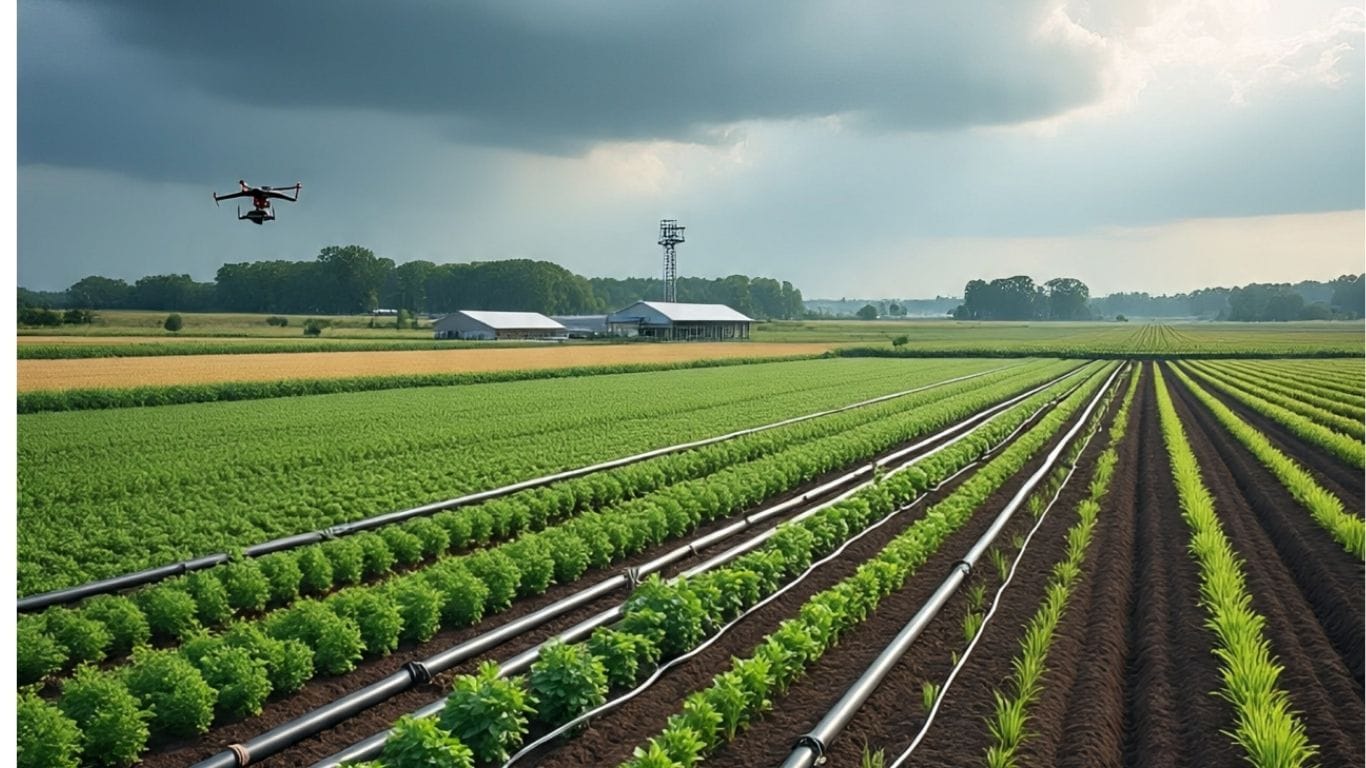
- Using as little irrigation water as possible is a top priority for farmers nowadays. Making the switch to more effective irrigation techniques, including drip or spray irrigation, is one approach to save money. These techniques reduce water loss from evaporation and needless surface water runoff.
- Farmers are using centralized command and control systems that analyze crop, soil, and weather data to determine the best time and amount of irrigation for a field. This is an attempt to make irrigation even more precise.
- As producers deal with water deficiencies in the farm due to drought, aquifer depletion, and water allocations, advancements in precision irrigation systems are becoming even more important. Growers can now remotely monitor and manage almost every aspect of their irrigation system thanks to products.
- Water, time, fuel, and vehicle wear and tear are all reduced by the systems. Producers will include variable-rate irrigation (VRI), weather data, and soil moisture monitoring into their systems.
- Another significant development is precision mobile drip irrigation. A linear motion irrigation system, or center pivot pulls the PC dripline across the field. The integrated emitters provide a consistent pattern throughout the whole irrigated area when the driplines are drawn behind the system. More water can reach the root zone because the driplines almost minimize evaporation and wind drift by delivering water straight to the soil surface.
g) Internet of Things (IoT) uses in Agriculture ;

- In IoT-based smart farming, a system is constructed to automate the irrigation system and monitor the crop field using sensors (light, humidity, temperature, soil moisture, etc.). From any location, farmers can keep an eye on the state of the fields. Smart farming based on the Internet of Things is far more efficient than the traditional method.
- Connected components in agriculture could include field sensors (for recording real-time weather, soil moisture, and temperature data) and aerial/satellite imagery for field monitoring. These device communications could also be used in dispatching programs, sales interaction tools, and other business management applications. The concept has been demonstrated in the consumer market in the “connected home,” where appliances, security systems, and the like communicate with each other and the homeowner.
- Recently, LPWANs (Low Power Wide Area Network) have been used by several ag start-ups and component suppliers (hardware, software, etc.) to supplement or replace cellular networks in wireless data transfer. “These networks are made to transport tiny bits of data over great distances infrequently.” Compared to the present cellular offerings, the devices that communicate with the LPWA networks have significantly longer battery lives since they utilize relatively little power. This offers a very strong total cost of ownership benefit over alternative solutions, especially when combined with inexpensive network consumption.
h) Sensors used in Agriculture ;
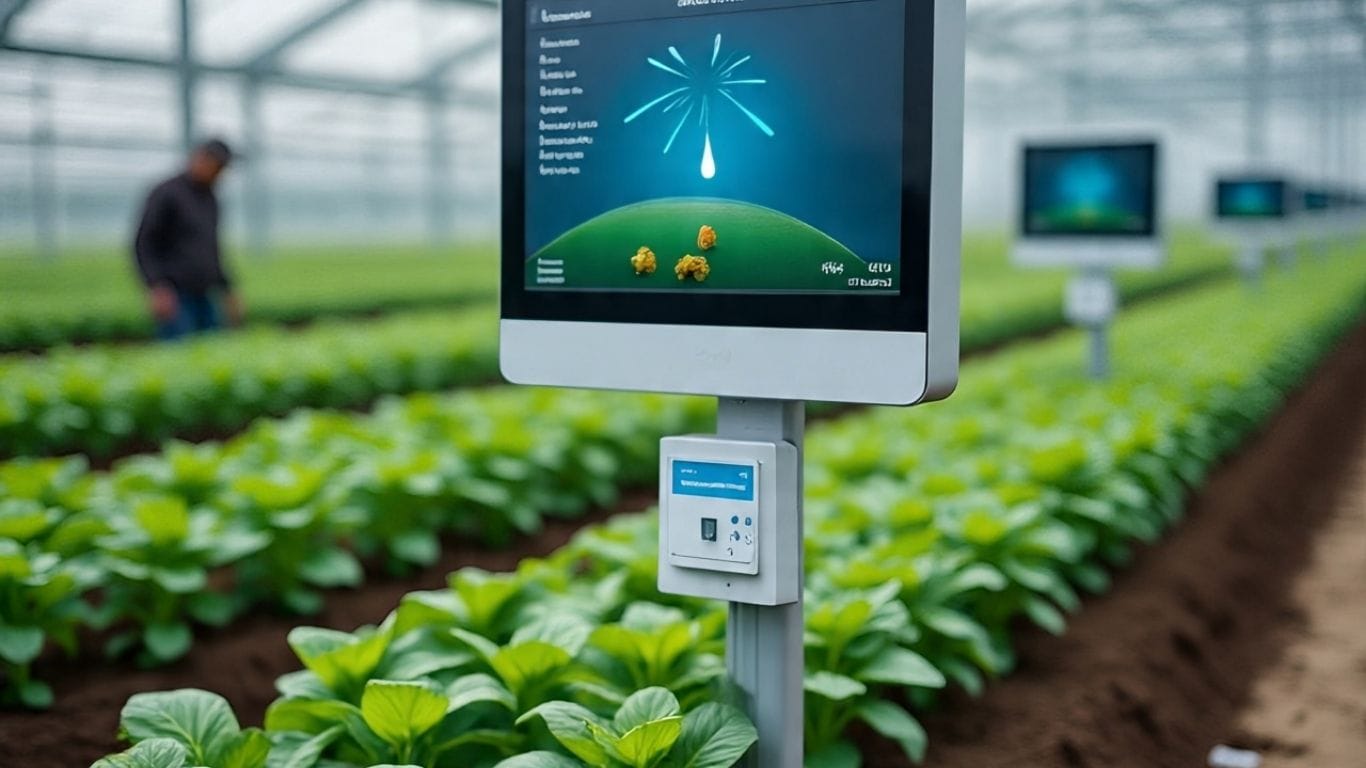
- High-tech systems are needed to support the production of high-performing crops. Researchers are using sensors to match crops to various soil types and weather patterns.
- Precision farming, soil water availability, soil compaction, soil fertility, leaf temperature, leaf area index, plant water status, local climate data, insect, disease, and weed infestation, and other data have all been collected using wireless sensors.
- The technologies used in water management are arguably the most varied and sophisticated to date. Improvements in this sector will continue to be driven nationwide by stricter regulations on water use and scarcity.
- The value of sensor data collected while in motion has also increased. CropSpec (Topcon), OptRx (Ag Leader), and GreenSeeker (Trimble) are on-board applicator options that have been developed in recent years. They instantly assist in customizing product applications by communicating current crop health conditions.
- One more invention? Trimble’s Weed Seeker weed detection sensor allows for accurate herbicide treatment at targeted sites. Its application is expanding in areas where weeds have become resistant to common broad-spectrum herbicides containing glyphosate.
i) Variable Rate Seeding ;
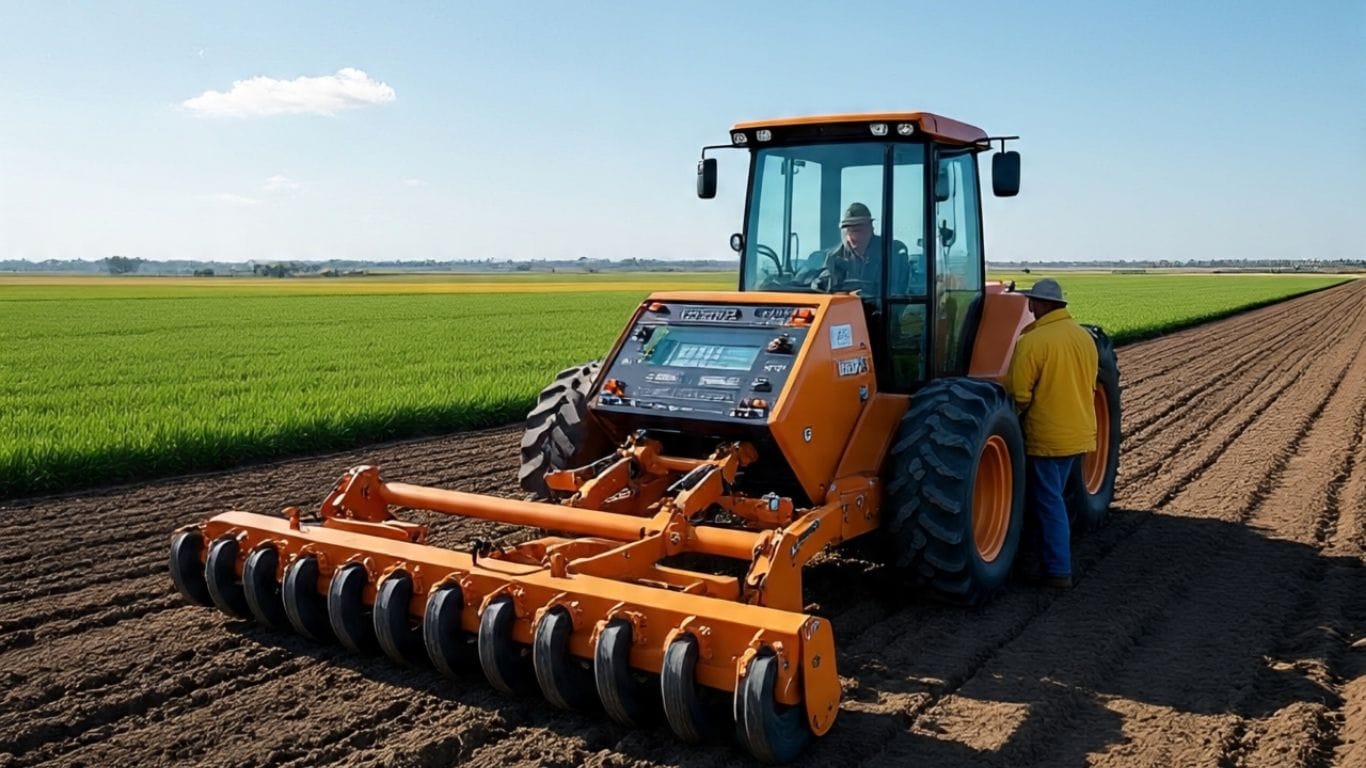
- The inclusion of variable-rate application (VRA) seeding may come as a surprise, given the number of more recent and intriguing precision agricultural technologies on this list.
- The nature of this has allowed it to retain its significance, according to Sid Parks, GROWMARK’s Precision Farming Manager. It appeals to a grower’s innate desire to optimize a field, capitalizing on all opportunities for yield improvement by paying close attention to variables that affect seed growth.
- “VRA planting is a little different from variable-rate fertilizer since it depends on your ability to collect precise data for the seed itself, which is the beginning of the agricultural process.”
- The fact that VRA seeding has a lot of room to grow as a category is another element contributing to its ongoing significance to precision agriculture in general.
- Even though VRA seeding techniques have been around since the mid-1990s, they are likely only being used on 5% to 10% of planted acres today. However, as the capacity to collect high-quality, practical data for VRA seeding improves, the likelihood of more growers incorporating this technique into their annual operations will only increase.
j) Weather Modelling Techniques ;

- Everyone is aware of nature’s unparalleled strength and its unpredictable and ever-changing nature, which keeps us wondering where it might go next. It is said and thought that Mother Nature is erratic and has a lot of secrets that we cannot fathom. Humans have abandoned the conventional approach to weather forecasting in an attempt to predict the natural world, and with the aid of the Internet of Things (IoT), weather forecasting has advanced further in the direction of greater accuracy and adaptability.
- But assistance is coming. “Although many significant technologies have been developed over the past 25 years and would be much more valuable with high-quality weather modeling, we are now at a place where ensuring adequate crop yields is crucial to ensuring that the world has effective food solutions.”
- As an illustration, harvesting potatoes at a specific temperature is essential to preserving the integrity and quality of the crop. Before bringing in the harvest machinery, this producer used to send scouts into the field to manually measure the soil temperatures. However, the growers can now collect all of their soil readings remotely thanks to clearAg, which makes it possible for them to complete their crop much more quickly than ever before.
k) Nitrogen Modelling ;
- Nitrogen modeling has gained prominence recently, though several types of variable-rate fertilizers have been in use for decades. However, regulating nitrogen has always been challenging due to the nitrogen cycle’s complexity and ongoing flux.
- Agronomic Technology Corp. (ATC) and SST Software recently collaborated to launch Adapt-N. Since its initial release in 2014, Adapt-N has grown in importance as a tool for effectively controlling nitrogen utilization. “Agriculture has a view that the environmental demands of today will only worsen as the business progresses.”
- The vast majority of growers desire easy-to-use techniques to solve these issues. That is the present contribution of nitrogen modeling techniques such as Adapt-N.
Precision Farming key challenges ;
a) Improving GNSS Signal Availability;
 In many agricultural settings, GPS alone does not offer adequate field coverage. Tree lines are a frequent problem, although hilly or mountainous terrain is uncommon. One obstacle to adoption has been the signal’s dependability. A few years ago, most growers had never heard of GPS. Many farmers are now sufficiently knowledgeable about GNSS to inquire about signal availability and reacquisition.
In many agricultural settings, GPS alone does not offer adequate field coverage. Tree lines are a frequent problem, although hilly or mountainous terrain is uncommon. One obstacle to adoption has been the signal’s dependability. A few years ago, most growers had never heard of GPS. Many farmers are now sufficiently knowledgeable about GNSS to inquire about signal availability and reacquisition.
GLONASS functionality is currently available on the majority of high-precision systems supplied in North America to supplement GPS for signal availability. More growers will see GNSS as a dependable answer to their problems as more satellite signals in orbit become available, improving availability in these challenging conditions.
b) Interoperability of different standards;
Interoperability is quickly becoming a challenge as more and more OEMs develop cutting-edge agricultural IoT tools and platforms. The different tools and technologies that are offered frequently do not adhere to the same platforms and technical standards, which causes a lack of consistency in the end users’ final analyses. For the translation and transfer of data across standards, the establishment of an additional gateway or gateways becomes crucial in many cases. Even while precision agriculture is developing quickly, it is still largely dispersed as of right now.
Converting intelligent standalone devices and gateways into comprehensive, farmer-friendly platforms is the difficult part. Component compatibility across equipment manufacturers is still being demanded, mostly through ISOBUS standards. The Agricultural Industry Electronics Foundation was established approximately a few years ago as the first official attempt to put this into practice. More than 170 businesses, associations, and organizations are currently part of the group and actively working together to make the standards function.
c) Making sense from big data in agriculture;
There are literally millions of data points on a contemporary, networked farm. However, managing and tracking every single data point and reading on a daily or weekly basis over the full growth season is nearly impossible (and not required).
When there are several growing seasons and extensive, multi-crop areas, the issue is especially severe. Farmers must determine which data layers and points they must regularly monitor and which data “noise” they can afford to overlook. Big data is driving digital agriculture more and more, but the technology is only useful when users can “make sense” of the information that is accessible.
d) Size of individual management zones;
Farmers have historically viewed their entire fields as a single farming unit. However, such strategy is far from being successful when it comes to managing and applying IoT in agriculture. Users must separate their properties into a number of smaller “management zones,” and there is considerable disagreement about the “appropriate” size of these zones. The zones must be separated according to the needs for fertilizer and soil sample (various zones have varied soil quality). The total size of the growing area should determine the number of zones and their sizes on a field. When farmers attempt to divide their farms in these zones, there is a dearth of reference material for them to use. Instead, many farmers continue to use the same irrigation and/or fertilization techniques across the entire farm, which produces less than ideal outcomes.
e) Non-awareness of the varying farm production functions;
In-depth economic analysis needs to complement internet tools, to ensure higher yields on farms. Users need to be able to define the correct production function (output as a function of key inputs, like nutrients, fertilizers, irrigation, etc.). Typically, the production function is not the same for all crops, differs in the various zones of a farm, and also changes over the crop/plant-growth cycle. Unless the farmer is aware of this varying production function, there will always remain the chance of application of inputs in incorrect amounts (spraying too much of nitrogen fertilizer, for example) – resulting in crop damage. Precision agriculture is all about optimizing output levels by making the best use of the available, limited inputs – and for that, the importance of following the production function is immense.
f) Barriers to entry for new firms;
Although precision farming has been a subject of considerable interest for several years now, the concept is still relatively ‘new’. As such, the big hardware/software manufacturers that entered this market at an early stage still have a definite ‘first-mover advantage’. The low competitiveness of the market can prevent new firms from entering this domain, with the existing big firms retaining a stranglehold.
Farmers can also face problems while trying to migrate data streams from an older platform to a newer one, and there are risks of data loss. The platforms and resources offered by a major agro-IoT operator may not be compatible with those of a smaller OEM, which could hinder the latter’s ability to attract enough customers.
Conclusion ;
- Many people have the thinking that only large farms with significant financial resources and information technology expertise can reap the benefits of precision agriculture. That is not the case.
- All farmers can utilize low-cost, simple-to-use technologies and procedures that can be developed. The data required to improve land and water use can be gathered by remote sensing, GPS, and GIS. Farmers can receive extra benefits by combining greater utilization of fertilizers and other soil amendments, calculating the economic threshold for managing insect and weed infestations, and safeguarding the natural resources for future use.
- Four pillars form the foundation of precision agriculture: right place, right source, right quantity, and right time. Globally, it has already had an impact on agriculture and farm yield performance, and its advantages will become more apparent and long-lasting if the aforementioned difficulties are resolved.
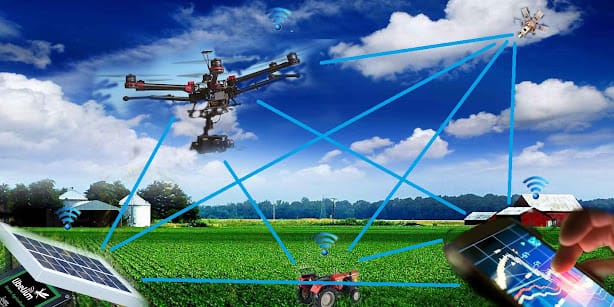
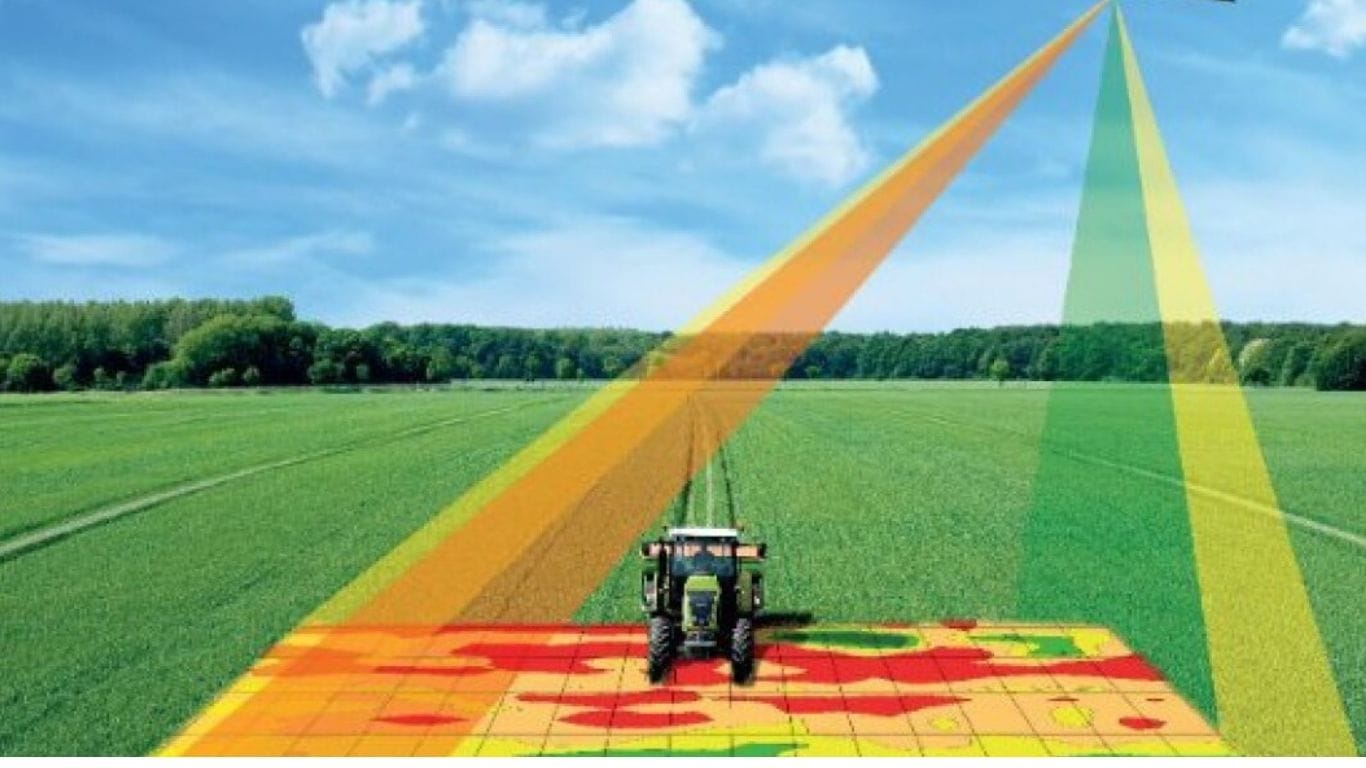
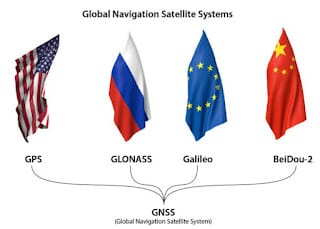 In many agricultural settings, GPS alone does not offer adequate field coverage. Tree lines are a frequent problem, although hilly or mountainous terrain is uncommon. One obstacle to adoption has been the signal’s dependability. A few years ago, most growers had never heard of GPS. Many farmers are now sufficiently knowledgeable about GNSS to inquire about signal availability and reacquisition.
In many agricultural settings, GPS alone does not offer adequate field coverage. Tree lines are a frequent problem, although hilly or mountainous terrain is uncommon. One obstacle to adoption has been the signal’s dependability. A few years ago, most growers had never heard of GPS. Many farmers are now sufficiently knowledgeable about GNSS to inquire about signal availability and reacquisition.